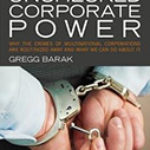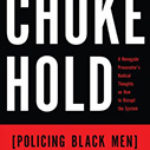When Police Use Force: Context, Methods, And Outcomes

Author: Craig Boylstein
Publisher: Boulder, CO: Lynne Rienner Publishers, 2018. 171p.
Reviewers: Frank Shor and Brandon Dulisse | October 2018
In today’s age of technological advances in recording and sharing experiences, police interactions have been thrust into the forefront of media coverage around the world. In recent years, the use of force by police has been an accepted and assumed component of many police interactions has quickly transitioned from being a private topic to one that is shared and discussed publically worldwide. Once an act of force by the police has been disseminated through mass media, every observer becomes part of a growing opinion on its use. Unfortunately each incident is often difficult to digest given the unique context of police interactions. Compounding the issue is the divisive nature of many media outlets and their desire to shape the incident to their intended audience. It is for this reason that the thorough expression on police force by Craig Boylstein is a much needed and beneficial resource in assisting observers in the appropriate definitions of important terminology and statistical figures that give necessary context in each situation. Even in complex areas of explanation, the author’s effective use of simple descriptions and footnotes help to provide further insight into these concepts in an effort to not dilute the message or interrupt the flow of the text itself. In the following review, we will discuss some of these examples by the author as well as defending why this piece is a necessary read for any who witness or have an opinion on the use of force by police officers in the field.
Arguably one of the best parts of this book resides in the simplicity of how each section begins. Each chapters is structured with an introductory paragraph providing a brief foundation for the reader’s understanding of the forthcoming body. Throughout each chapter, significant terms and statements are accompanied by relevant explanations (and/or statistics where applicable), creating a strong basis of understanding that keeps the reader in a position to follow the thought process of the author and better understand the conclusions drawn. This layout helps to provide the reader with a better understanding of the work and keeps the odds of misunderstandings occurring to a minimum through the careful explanations and definitions of terms. The non-combative and informative tone creates a literary environment full of restraint that we found to be professional rather than written with any sort of emotional slant. While most works reflect even the minute feelings of the author, the merit of this work demonstrates noticeable restraint in expressing the rights and responsibilities that police officers must acknowledge during the most intense and potentially violent moments of their career. The author accomplishes this monumental task by creating a work that can be seen as a bridge between ideological differences built through the use of statistics and objective facts.
Chapter one is aptly named “Defining Police Use of Force” and does a commendable job of creating a solid foundation on which the reader can construct their opinion on the rest of the work. In an effort to establish transparency and reduce bias, the author outlines the nine major steps that are necessary in the process of gathering data, drawing conclusions in cases, and the reasoning behind selecting specific data pools so as to establish transparency. These steps created a basis for the theme of sincere and earnest communication between the author and reader so as to eliminate any questions as to his intention with the publication and in regard to the methods used and the intent behind the methods themselves. This open-handed approach is a boon to the text as it deals with hot-button issues such as disproportionate racial conduct in law enforcement as well as the quality of training in law enforcement agencies. The author also includes operational definitions for key concepts throughout the chapter including but not limited to: use of force, empty hand controls, and verbalizations. In addition, these definitions allowed the reader to be exposed to the different levels of force that are appropriate for law enforcement in each context, setting up future chapters for a deeper analysis into these situations. It was clear the author intended to eliminate the possibility of confusion in regards to the topics covered by his statements and data throughout the publication.
Chapter two covers the power and responsibilities of federal courts with police use of force. In particular, the chapter covers the process of reporting the misuse of force by police during an interaction of citizens and law enforcement. The author accomplishes this by introducing a number of Supreme Court cases that helped establish rulings on police use of force. The selection of cases range in the severity of the force exerted with each case being accompanied by the Supreme Court’s ruling and an explanation of the decision, providing the reader with a general understanding of the landmark cases that have shaped the acceptable uses of force within each general context and situation.
Chapter three titled, “Measuring Police Use of Force,” is the first chapter to employ statistics en masse. This is accomplished through the display of data and tables on a combination of police-public interactions and the rates of use and possession of different tools of force. One of the most impressive parts of the text in regard to the statistics used is the thorough explanations of the data, collection methods, calculations implemented, and overall summary message it provides when put together. The text offers a comprehensive list of the data used in one of the figures with an appendix that encompasses all of the statistical tables for Chapter three. In one segment, the author provides a thorough explanation of two databases that were used to gather the data and aid in the understanding of the similarities and differences in use of force education in departments. The chapter provides a variety of information from multiple sources all while seamlessly interweaving them into a single selection of data and supporting records that helps describe the different tools at the disposal of law enforcement officers as well as the frequency of use for each tool or method available.
Chapter four is another statistically concentrated chapter that is given the same treatment as its predecessor with thorough explanations of the statistics gathered through clear visual comparisons. Specifically, this chapter examines whether or not statistical evidence of racial disparity or discrimination exists with the use of force and treatment of various racial groups. Through an objective look at the numerical data, the author examines whether correlations exist between race and responses of force by police. In addition to race, this segment examines ethnicity, income, age, and sex while also taking into account population density. The author provides a clear establishment of the discoveries made through the data meticulously provided in the bulk of the chapter and creates a reprieve from the data derived from the Police-Public Contact Survey (PPCS). One particular example of the author’s summary findings stems from his comment, “being stopped in public because one looks “suspicious” or like someone else leads to minorities having higher odds of feeling the stops are unjust and ultimately that policing activities in general are illegitimate.” This conclusion seems especially interesting since that it is something that may not be considered when viewing the effects on public relations and stop-and-frisk procedures. While a striking summation of the data, the author also leads to many other interesting conclusions throughout this numerically-filled chapter.
The author states that the PPCS data does not provide the data necessary to cover all serious issues and as a result, Chapter 5 is dedicated to those issues under the title “Current Controversies.” This chapter contains a potpourri of issues that would not have fit into the other chapters as according to the author “… [He] was not able to test with available data but which involve some of the most prominent issues in modern-day policing as it pertains to subduing subjects…” In particular, the issues involved in this group contain questions on addressing mental illness and force, the use of the new Taser X26, and lethal force. Each issue is treated independently from the others and function as if they had their own dedicated chapter, keeping the information from bleeding into one another despite their clear labeling. The author’s execution makes it clear that the isolation and length of these topics should in no way dilute their significance. In the segment on lethal force, the author relays his own personal experience based on conversations he has had with those directly impacted while also commenting on some of the most common questions and misinterpretations regarding the use of lethal force.
It is in the concluding Chapter six titled “Demanding Justice” where Boylstein allows himself to lower the barrier between objectivity and bias allowing them to intermingle respectfully while maintaining a position of neutrality in the grand scheme. This chapter takes what could be anticipated as a breach of the neutral tone of the rest of the book by creating a setting that retains a neutral view of each police interaction while acknowledging the underlying features of the reality of police use of force in today’s society. Craig Boylstein concludes with an optimistic summary of a topic cloaked in public outcry and death and powerful statements on both ends of the spectrum. There are two substantial concluding points that stand out and reinforce the main purpose of this publication. The first, “Rather than us against them, it is ‘We the people,’ -protecting our neighbors, defending the rights of our ideological opponents- that is what it means to be an American citizen” (p.132). Many law enforcement officers do not pleasure in the use of force and only apply it as a means of protecting the rights and privileges of those abiding by the law. The author also summarily states: “The exciting aspect, for me at least, is that the potential to establish a true system of justice exists in America. A truly equitable system of justice is possible, and even probable, if we as a people demand it” (p.133). Through the use of these four sentences, Craig Boylstein tied the core of this publication together with a neat bow.
In conclusion, this publication proves to be thorough, objective, and impressive at every turn. The overall body of work creates openings for readers of all backgrounds to better understand the different types of force implemented by law enforcement, the judicial understanding and ruling in terms of these uses of force, and gain meaningful and objective information on hot-button issues. While no major criticisms can be applied to this work, the thorough explanations of the statistics and statistical processes seem a bit disruptive at times and stifle the flow of an otherwise easy to read book. This may be just a preference of the critic though, as the objective value of the explanations and the data itself far outweighs any literary discomfort they may cause. While we found the text to be valuable for any audience, we believe that this text is of exceptional value for criminal justice and law students due to the objective definitions and nature of the writing as well as the fact that it provides a solid foundation for the understanding of the fundamentals of police use of force on which to build upon. The text is versatile, concise, and thorough in its explanations of the data and the conclusions drawn from it. From start to finish, the text is exceptional.
Frank Shor, Student, Indiana University of Pennsylvania
Brandon Dulisse, Assistant Professor, Indiana University of Pennsylvania


